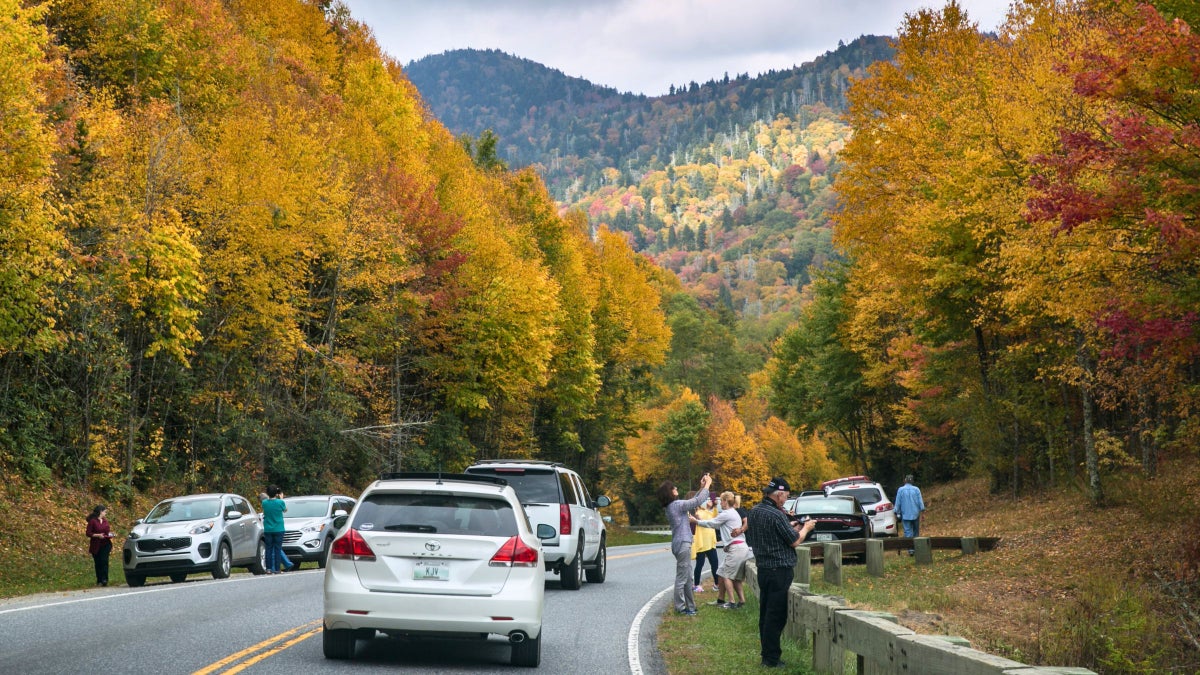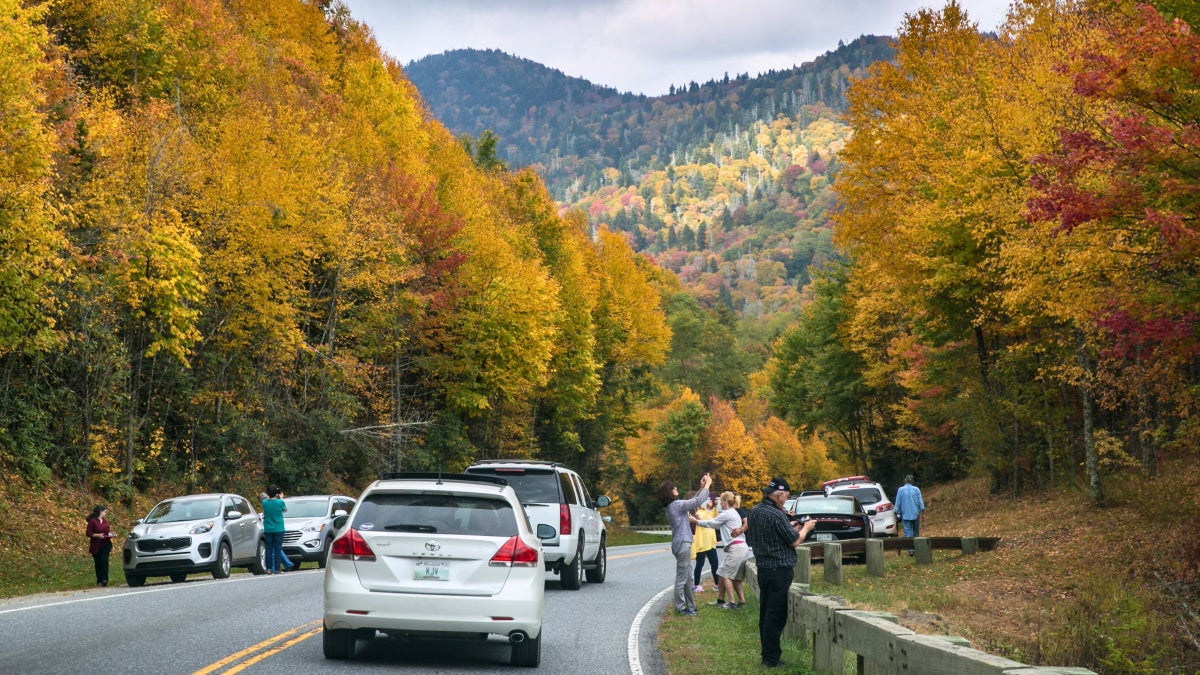
This story was produced in partnership with RE:PUBLIC Lands Media, an independent, nonprofit news organization.
The Roaring Fork Motor Nature Trail forms a 5.5-mile loop through dense hardwoods, hugging the mountain slopes like a stretch of bench-cut singletrack for cars. Massive trees rise from the edge of the narrow one-lane blacktop, and waterfalls are scattered throughout the forest. It would be a transcendent cruise if it weren’t for all the minivans, safari-style Jeeps, and side-by-side ATVs clogging the road.
I was on the Roaring Fork on Labor Day weekend, one of the most visited weekends in Great Smoky Mountains National Park (GSMNP), the 500,000-acre swath of mountains and historic farmland straddling the border of North Carolina and Tennessee. GSMNP is by far the busiest national park in the country, attracting 12,191,834 visitors in 2024—almost 8 million more than the runner-up, Zion. Those visitors spent more than $2 billion last year in gateway communities like Gatlinburg, Cherokee, and Pigeon Forge.
During my visit, it seemed like most of those people were on the road ahead of me. But that’s why I was there: to see how a nationwide staff crisis was impacting America’s most popular national park.
Even before the White House furloughed 9,300 National Park Service staffers during this month’s government shutdown, this year has been a brutal one for the agency. By August it had lost 4,055 permanent employees, nearly a quarter of its full-time staff. On October 20, the Department of the Interior revealed in court documents that it intended to abolish 2,050 more positions, including at least 272 in the park service.
But hard data from specific parks has been hard to come by. The questions I sent to Great Smoky Mountains’ acting superintendent, Charles Sellars, were politely passed on to the national communications office in Washington, D.C., which declined to comment on personnel matters. The Association of National Park Rangers, a nonprofit that works on behalf of park employees, estimated that 12 of the park’s 274 full-time employees were let go after the initial wave of layoffs in February, but the group hasn’t been able to update those numbers since.
“Park Service employees aren’t talking with us right now, because they’re fearful of termination,” says Bill Wade, the group’s executive director. “Information stopped flowing. They’re hunkering down and unwilling to speak about anything at all that’s going on inside the parks.”
Kristen Brengel, the senior vice president of government affairs for the National Parks Conservation Association, echoes that sentiment. “There has been a steady rate of attrition at parks across the country, but the park service is withholding all of this information from us and the media, so we can’t get firm numbers for specific parks.”
One thing we do know: Great Smoky Mountains National Park is unique because of the sheer volume of visitors. The Smokies see more people in a single month than many park units see in an entire year. Last October alone, 1.5 million people visited the park, after a million in September and another 1.5 million in August.
“Twelve million people a year is a lot of flushing toilets and a lot of feet on the trails,” says Dana Soehn, president of Friends of the Smokies (FOS), the nonprofit partner that provides operational funds for the park. “The needs and challenges are many.”
I wanted to see how the park was handling it. I live about an hour from Great Smokies, and I’ve been exploring this landscape for more than 20 years—so I know places where you’re guaranteed to see a crowd. Cades Cove Loop Road, an 11-mile loop road through a pastoral valley, is famous for its traffic jams. Two million people a year ascend to the park’s highest point, 6,643-foot Kuwohi (formerly Clingmans Dome), where a concrete lookout tower offers 360-degree views. About the same number cruise the Roaring Fork Motor Nature Trail. These are the spots I usually avoid, but on this trip, I wanted to go where the tourists were going and see what they were seeing.
The post Everything’s Fine in the Great Smokies! (Seriously, There’s Nothing to See Here.) appeared first on Outside Online.














